Smartphones are used not only to make calls and text messages but also to access various contents. Their convenience has made them an indispensable communication tool for daily life. And since smartphones can be customized through applications, customers are interested not only in smartphones themselves but also in SNS, games, and other services.
Sharp's development concept for smartphones has always aimed to have users rediscover something new - how fun and exciting smartphones can be. In 2013, with the aim of dramatically changing the way people interact with their smartphones, Sharp went back to the drawing board to start planning and developing emopa.”
Since users always carry their smartphones with them, Sharp developers thought it would be interesting if smartphones could start talking with their users, observing the circumstances. This way, smartphones would transform from a device for simply displaying information to an emotional partner that can share fun and excitement with its users. Engineers came up with numerous ideas, techniques, and improvements. The development team gradually took on more members, and each member wrote down ideas and took action.
This was the start to create smartphones with emotions to move the human heart.
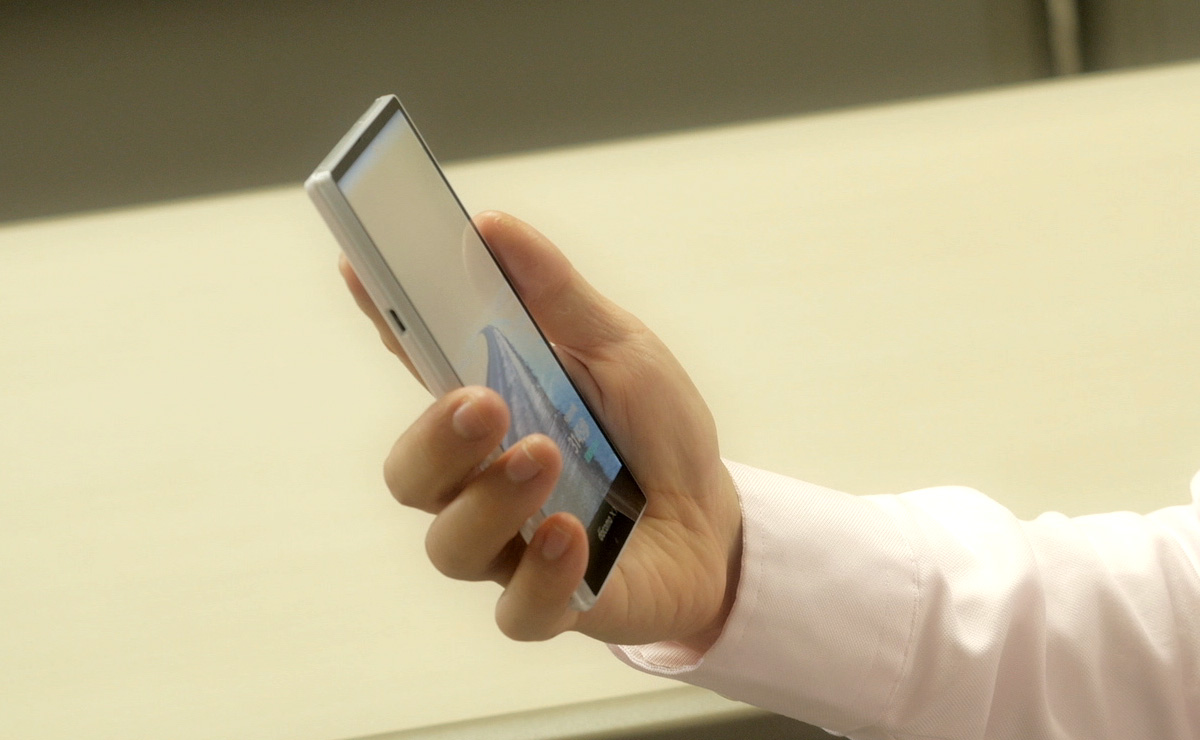
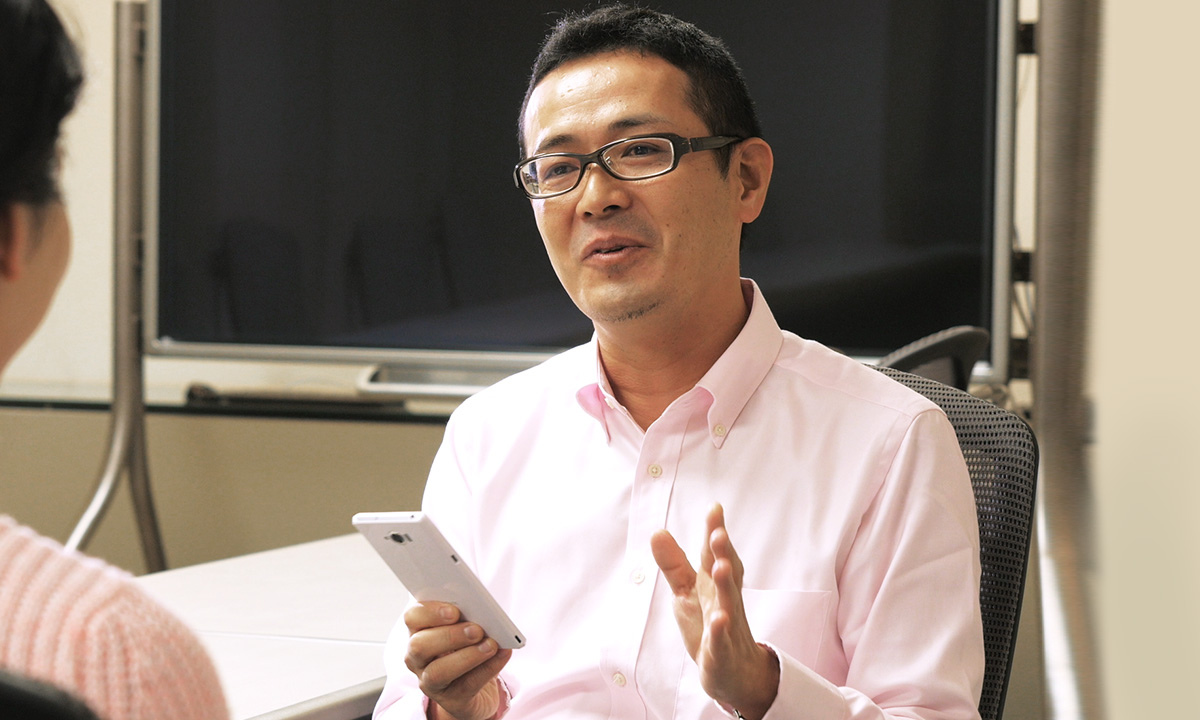
Many difficulties await those who take on unprecedented challenges. The significance of smartphones that can initiate conversations was not accepted well at first during in-house presentations. Development plans were repeatedly rejected at the planning stage.
The development team reviewed the negative responses, and assumed the new function needed to be experienced first to be understood. So the team produced a video depicting how people's lives can change when an emopa function is added to smartphones and held another in-house presentation with over 100 participants from related areas. By visualizing an uncertain future, the team appealed to participants' desire to create something new- a desire that all developers shared deep down inside. Once the team had specifically stated their ultimate goal, the number of co-workers who approved of developing such a product increased. From then on, development of emopa proceeded rapidly.
Although everyone was finally heading in the same direction, there were numerous technical challenges to overcome. The first questions were: what aspects of the user's daily life should be detected, and what should the smartphone say? Answering these questions would be a difficult process since there was no one correct answer. Each trial and error led to changes in the software specifications. To accommodate such high-speed development, an agile development method was adopted. Each software development phase was set to one to two weeks, and the progress made during each phase was shared with all members. By repeating a cycle of plan/analyze requirements/design/install in short intervals, Sharp was able to increase the speed of development and minimize risks. And by conducting all processes in-house, without consigning any of the work, Sharp was able to adapt to frequent specification changes.
Smartphones contain a number of sensors to detect the surroundings: a GPS sensor uses satellites to determine the smartphone's current location, an acceleration sensor and gyro sensor detect movement of the smartphone, and a grip sensor detects when the smartphone is being held. The measurement functions of the acceleration sensor are extremely precise and sensitive; they can even detect, by the different waveforms produced, whether a user is walking with the smartphone in a pants pocket or in a chest pocket. That is why the development team measured the waveforms produced during several thousands of human activities, such as traveling by train and riding an escalator. The waveform for each activity was analyzed and identified. Then Sharp utilized the technical know-how it had gained during development of earlier smartphones to address the problem of battery power being consumed when sensors are constantly in operation. By not just using sensors to detect the current situation but also by developing with a sensor- control IC, Sharp was able to obtain accurate information with a minimal number of sensors.
So why did Sharp devote so much effort to ensure that its sensors can correctly recognize the situation that the smartphone user is in at any given time? Because Sharp knows that emotional words will only touch the user's heart when the timing is precise.
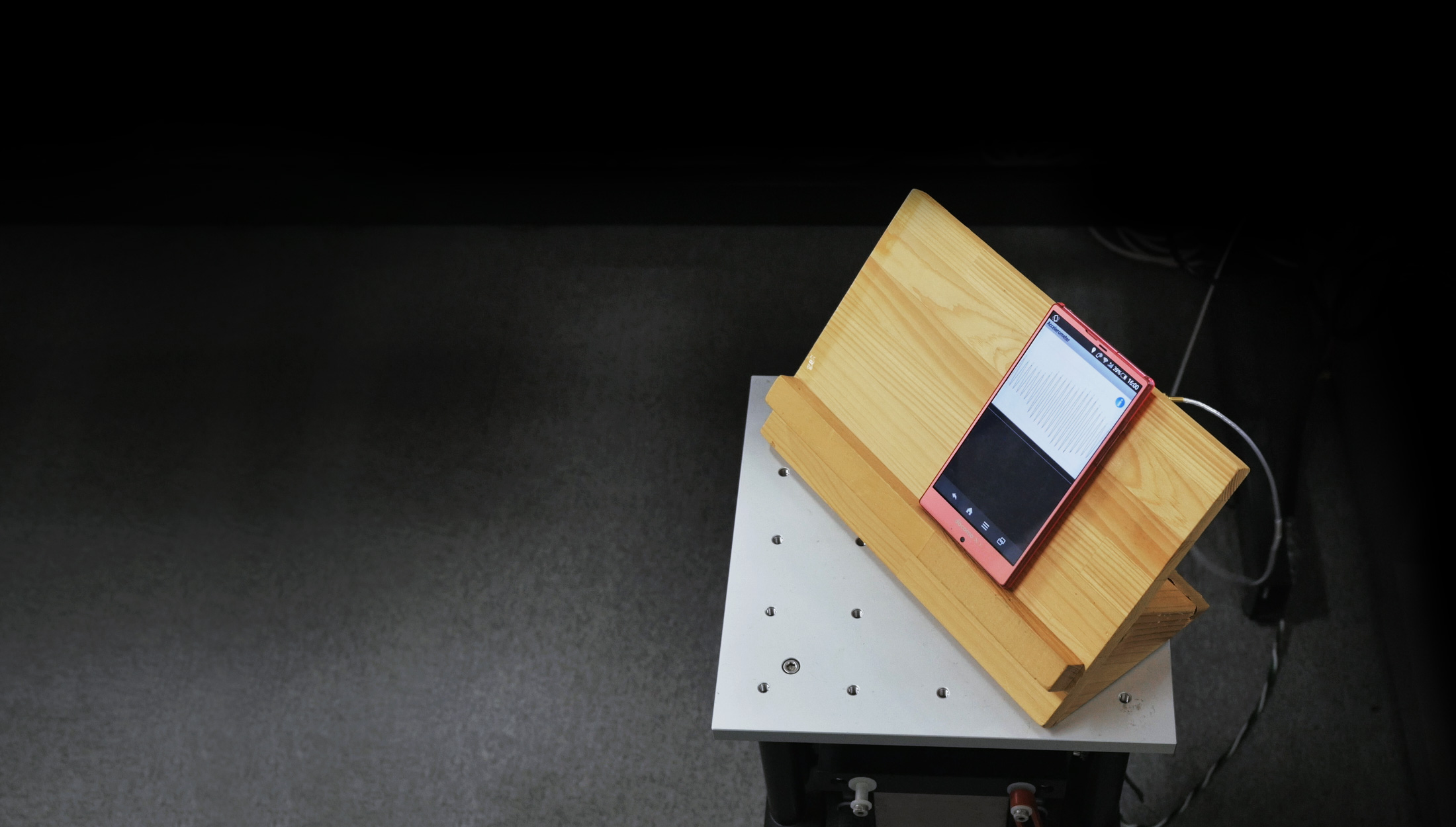
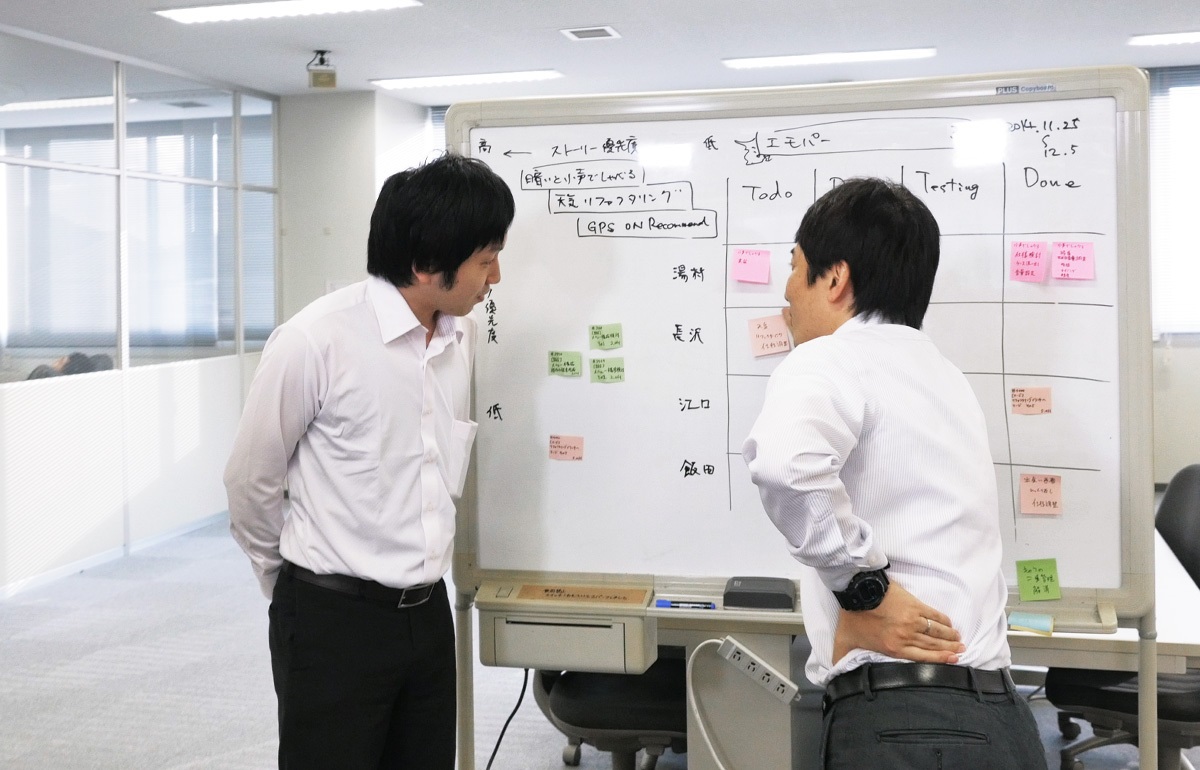
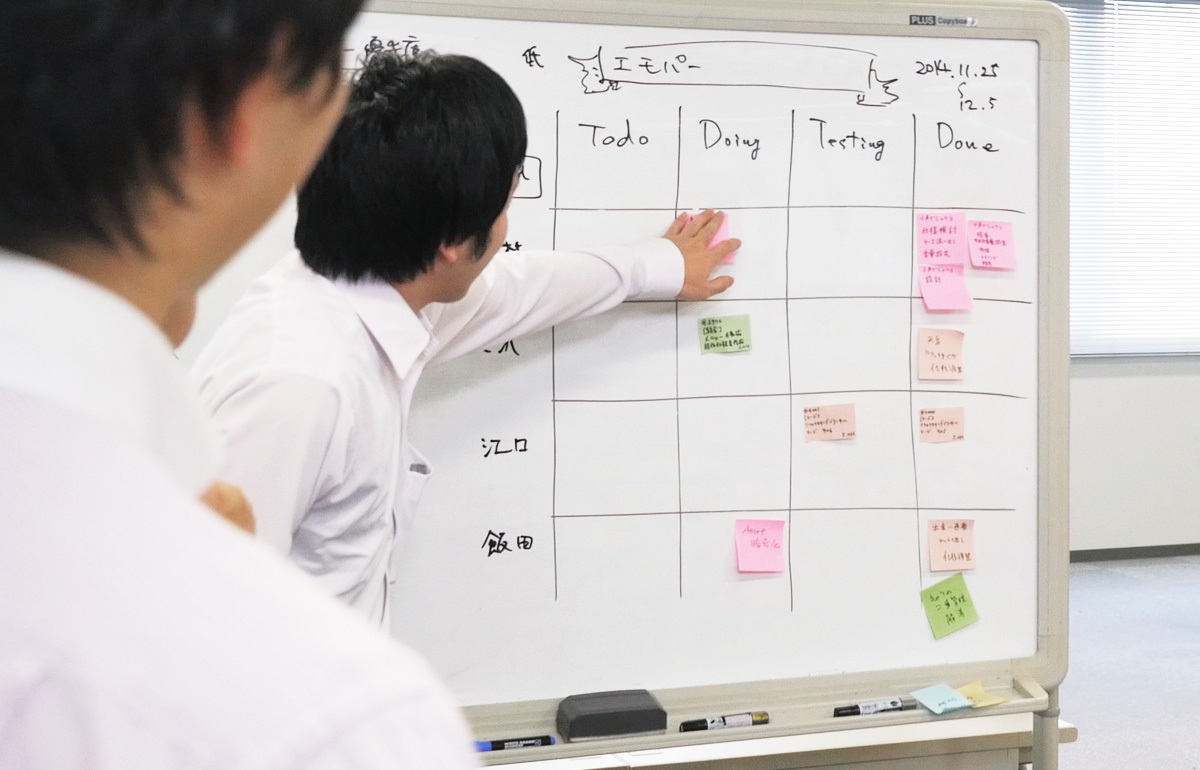
At one point during the development of emopa, the team hit a big wall. No matter how hard they tried, they couldn't seem to make emopa conversations fun. The many prototypes that they had rapidly produced through agile development were missing that special something to move the user's heart. After concluding that the remarks themselves lacked the necessary charm, the development team turned to KAYAC Inc., a company adept at creating punch lines.
During consultations with the Sharp team, one KAYAC staffer enthusiastically declared that “emopa has the potential to become a new media. I want to make emopa my masterpiece." That is how Sakuo, a man with a cool voice; Emoko, an admirable and supportive woman; and Tsubuta, a pig that freely speaks its mind, came about. Several thousand heart-moving lines were created. And to express a more humanistic side, humorous remarks were added for emopa to initiate when the smartphone has been shaken or dropped. In addition, Sharp decided that the smartphone screen should display the emotions of the three characters—via letters or pictographs—rather than their actual remarks. Sharp felt that the characters would be more human-like and lovable if the words they speak and their emotions differ. Tsubuta's emotions, for example, are expressed through “nose” pictographs. Since pigs have such a characteristic nose, these pictographs can easily convey the emotions of the character.
But something was still missing. When the development team tried actually using the emopa function, they found that smartphones talking freely and making funny comments outside of any substantial context was more creepy than cute.
To solve this problem, the specifications had to be dramatically changed. It was August 2014, right before summer vacation. With a deadline to meet, the team would have to forgo their vacations to think hard and analyze where this creepiness was coming from. They reviewed what type of information users would like to obtain when looking at their smartphones. They noticed that a lot of people want similar information, such as the time and the weather forecast. While working to improve emopa, the developers found that the key to resolving the creepiness was to give the conversations context. First, they decided to provide the information users want in a timely fashion. Then, they decided to add comments that would cheer users up or make them smile. By doing so, the strangeness was eliminated, and the team became confident that emopa could now move the hearts of smartphone users.
Adding context to conversations would entail a major change in specifications. In September 2014, KAYAC had to reset all the remarks that it had already produced and create totally new comments to conform to the new specifications. This undertaking would not have been successful without the strong support of KAYAC.

There was no one ideal solution for stimulating the emotions of users. Many members of the development team worried about the direction their development activities had taken and wondered whether the emopa function was really necessary. But they continued their development efforts believing in the enormous potential of emopa.
As emopa development progressed, developers started to feel differently about the project. During the latter stages of development, each member carried a smartphone equipped with emopa and provided feedback on how they felt about emopa and on their observations about it. They then leveraged that feedback during actual development. Although at first, the team members found themselves focusing on identifying the creepiness of emopa, they gradually started to look forward to hearing emopa speak. And eventually, they became so attached to their smartphones that they could no longer be satisfied with a smartphone without emopa.
emopa might not be a function that appeals to everyone. However, for those who like it, it is a heart-moving function that is hard to part with. The developers themselves have experienced that firsthand. emopa was proactively developed based on their desire to create something completely new.
emopa embodies Sharp's proposal for a new relationship between people and their smartphones.
*emopa is a function installed in designated smartphones available for the Japanese market only. The emopa function speaks in Japanese language only. (as of December 2014)

















